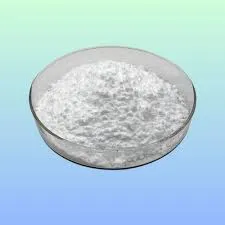
Novemba . 27, 2024 13:27 Back to list
Effective Bonding Agents for Enhanced Material Adhesion and Durability
Understanding Latex Bonding Agents Applications and Benefits
Latex bonding agents play a crucial role in various construction and manufacturing processes, providing enhanced adhesion properties that improve the durability and longevity of materials. These agents, derived from natural or synthetic latex, are commonly utilized in the formulation of paints, coatings, adhesives, and construction materials. This article delves into the composition, applications, and benefits of latex bonding agents, helping to illuminate their importance in industry.
Composition and Types
Latex bonding agents are primarily composed of polymer emulsions, which are stable mixtures of water, latex (a colloidal suspension of polymer particles), and other additives. The most common types of latex used in bonding agents include styrene-butadiene (SBR), acrylic, and vinyl acetate-ethylene (VAE). Each type of latex imparts specific properties to the bonding agent, allowing for tailored applications based on performance requirements.
- Styrene-Butadiene Rubber (SBR) Known for its excellent mechanical properties, SBR is widely used in construction adhesives and sealants. - Acrylic Latex This type is valued for its superior flexibility, UV resistance, and weatherability, making it ideal for exterior applications. - Vinyl Acetate-Ethylene (VAE) VAE latex is often used in adhesive formulations due to its strong bonding capabilities and clarity in the finished product.
Applications
Latex bonding agents find extensive applications across a range of industries
1. Construction In the construction sector, latex bonding agents are commonly incorporated into cement and mortar mixtures. They enhance the bond strength between aggregates and ensure water resistance, flexibility, and durability of the cured material. These agents are also used in thin-set grouts and tile adhesives, providing superior adhesion for ceramic tiles and other materials.
2. Paints and Coatings In the paint industry, latex bonding agents serve as a crucial component of water-based paints. They improve the adhesion of the paint to the substrate, enhance the film's flexibility, and provide water resistance, making these paints suitable for a variety of surfaces, including drywall, wood, and masonry.
3. Adhesives In adhesive formulations, latex bonding agents improve the performance of the adhesives by providing strong bonds while maintaining a degree of flexibility. This characteristic is particularly important in applications where movement is anticipated, such as in flooring and automotive components.
latex bonding agent

Benefits
The use of latex bonding agents presents numerous advantages
- Enhanced Adhesion The primary benefit of latex bonding agents is their ability to improve adhesion between surfaces. This results in stronger, more durable products that can withstand various environmental conditions.
- Flexibility and Elasticity Many latex bonding agents are designed to be flexible, allowing products to expand and contract without cracking or losing adhesion. This is particularly important in dynamic environments where temperature fluctuations are common.
- Water Resistance Latex-based products often exhibit excellent water resistance, which is essential for applications exposed to moisture, such as outdoor structures or areas subject to spills.
- Ease of Use Latex bonding agents are typically easy to apply and can be cleaned up with water, making them user-friendly for both professional and DIY projects.
- Environmental Considerations Many latex bonding agents are formulated to be low in volatile organic compounds (VOCs), aligning with growing environmental regulations and consumer preferences for safer, greener products.
Conclusion
Latex bonding agents are an essential component in various industries, providing improved adhesion, flexibility, and durability in multiple applications. As technology continues to evolve, the formulation and use of these agents will likely become even more advanced, paving the way for further innovations in construction, manufacturing, and beyond. Understanding the properties, applications, and benefits of latex bonding agents can help professionals select the right products for their specific needs, ultimately leading to enhanced performance and longevity in their projects.
-
Premium Cellulose Ether: Effective Liquid Thickener Solutions
NewsAug.29,2025
-
HPMC for Tile Adhesive: Enhanced Bonding & Workability
NewsAug.28,2025
-
tile-bonding-additives-for-stronger-bonds
NewsAug.22,2025
-
construction-grade-rdp-for-wholesale-needs
NewsAug.22,2025
-
trusted-hec-supplier
NewsAug.22,2025
-
HEC Solutions for Industrial Excellence
NewsAug.22,2025







